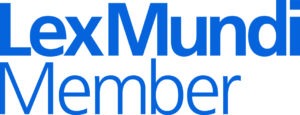It has become common practice for companies to sell and license out patents, and even use patents as collateral, in order to secure loans from financial institutions or attract capital from investors. As a result, patent valuation has been thrust into the spotlight, challenging potential buyers of patents and lenders. This article discusses what buyers of patents should consider, and what lenders should take into account when providing loans with patents used as collateral.
Considerations for Potential Buyers
In considering whether or not to purchase a patent, the potential buyer should consider the patent from both a legal and a business perspective. From the legal perspective, the buyer should try to determine the patent’s strength, based on factors such as the duration of protection, the breadth of potential patent claims and how courts are currently interpreting these claims, court practices, the patent’s risk of being challenged in court, and its susceptibility to infringement.
From the business perspective, the buyer should try to determine the patent’s market potential, potential competitors, commercialization potential, suitability to the needs of its business, and alternative technologies, as well as general economic conditions.
Other considerations include government regulations, as these will govern the use and period of exclusivity of the patent and may also have an impact on its value. These broad considerations need to be balanced against one another at the beginning of the valuation process.
Case Studies
These legal and business considerations were taken into account by a major Internet technology company that recently purchased a multinational telecommunications company for USD 5.5 billion. The motivation behind the purchase was the telecom company’s mature patent portfolio. Although the Internet technology company never released the exact details of how it arrived at the price, a look into its U.S. Securities and Exchange Commission (SEC) filings offers some insights.
The company stated that the acquisition of the patent portfolio complemented its software expertise with hardware expertise, and the purchase would protect its operating system from lawsuits. In other words, the technology company saw this patent portfolio as a way to stay competitive and as a deterrent against patent litigation.
Another example is the recent purchase of a communications and IT company’s patent portfolio by a mobile technology company. According to the mobile company’s SEC filings, it agreed to purchase a portfolio consisting of more than 500 patents and numerous patent applications covering a wide range of cellular phone infrastructure technology for USD 22 million.
Certain statements in the SEC filings indicate that the patents would benefit the mobile company’s expansion into mobile applications for business-to-business and business-to-consumer transactions. It also looked at the profitability of the patents if damages arose from litigation, and what the revenue would be from licensing out the patents.
Loans with Patents as Collateral
If a borrower wants to use a patent as security for a loan, the lender should ascertain that the borrower is the actual owner of the patent. This is a straightforward task, unless the patent has been assigned. In jurisdictions where recordation of assignment is not required, tracing the owner may be difficult.
The lender should only accept that the borrower is the actual owner of the patent if the borrower can show a clear chain of title. The lender should also ensure that the borrower has addressed any liens and encumbrances against the patent.
The lender should then value the patent by determining what exactly is being offered (the invention, the patent, or both) and ascertaining the legal characteristics of the patent rights. The lender should also look at the capability of the borrower to utilize the patent rights in a commercial context.
In practice, a professional valuator will be involved at the request of either the lender or the borrower, and he or she will use a methodology based on a cost approach, an income approach, or a market approach. The lender should be satisfied not only that the borrower owns the patent, but that the patent is free of liens and encumbrances. In addition, the borrower should be responsible for paying for the valuation.
Every patent purchase is unique. Buyers have distinct needs and expectations. These should be well-formulated before beginning to value a patent. Understanding what there is to gain from purchasing a patent allows a buyer to focus on patents in the target market, before having to delve into more detailed valuation techniques.




